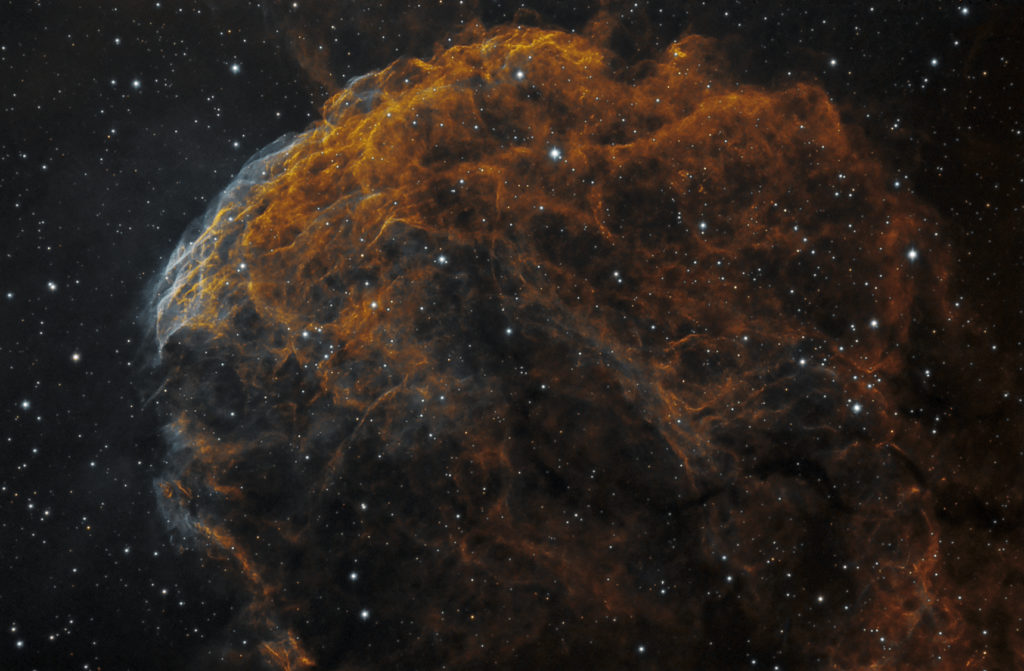 The Jellyfish Nebula is an expanding bubble-shaped cloud of debris from a massive star that exploded over 30,000 years ago. The nebula is about 5,000 light-years distant in the constellation Gemini. It is a faint and elusive object but is captured here using the technique of emission line imaging using Hydrogen Alpha (Ha) and Oxygen III narrowband filters. The image is a Ha-OIII-OIII false colour composite with an added luminance layer created from the first component of a Principal Component Analysis (PCA) of the multiband image.
The Jellyfish Nebula is an expanding bubble-shaped cloud of debris from a massive star that exploded over 30,000 years ago. The nebula is about 5,000 light-years distant in the constellation Gemini. It is a faint and elusive object but is captured here using the technique of emission line imaging using Hydrogen Alpha (Ha) and Oxygen III narrowband filters. The image is a Ha-OIII-OIII false colour composite with an added luminance layer created from the first component of a Principal Component Analysis (PCA) of the multiband image.
Right ascension: 06h 17m 31.71s | Declination: +22° 39′ 45.3″ | Distance: 5,000 Light Years
Field of view: 42 x 28 arcmin
Camera: SBIG ST-10XME
Telescope: APM 152-1200ED F/7.9
Guiding: Starlight Xpress Active Optics SXV-LF-AO
Mount: 10Micron GM1000 HPS
Filters: Astrodon Ha (3nm), OIII (3nm)
Exposures: Ha 8 x 30 min, OIII 22 x 30 min
Total exposure: 15 hours
Scale: 1.15 arcsec/pixel
Image acquired: 5 nights over the period January – March 2016
Image capture with MaxIm DL, FocusMax, ACP; Image processed with MaxIm DL; PixInsight v1.8 Deconvolution; ImageJ v1.51j8 PCA; Photoshop CC 2014